What It’s Like to Compete in the Inferno, the World’s Most Treacherous Ski Race
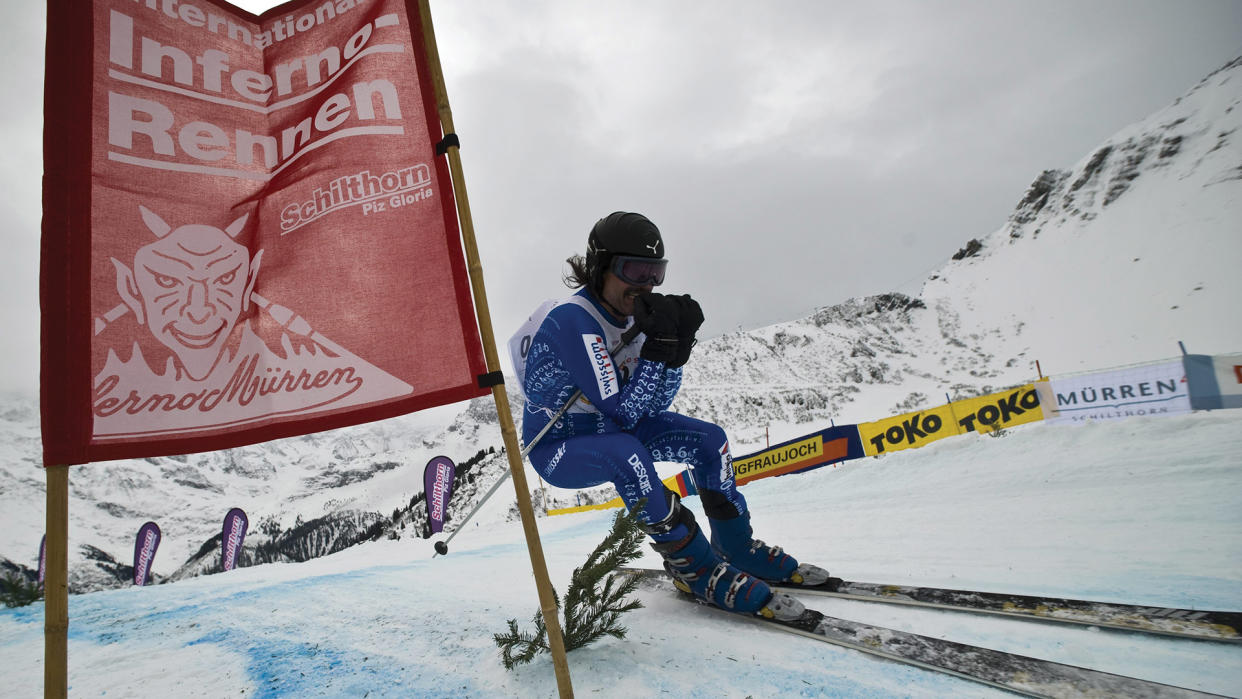
- Oops!Something went wrong.Please try again later.
High overhead, snow-capped mountains gleamed in the moonlight while a thousand people, their breath steaming in the frigid night, bayed for the blood of a giant effigy of the devil, about to go up in flames on a burning pyre. The soundtrack was base-thudding AC/DC, blaring through loudspeakers—and accompanied by a cacophony of large cow bells rung by Swiss men in lederhosen. It was the most peculiar opening ceremony for a sporting event I’d ever encountered. But then, this was the Inferno, the world’s most bonkers ski race.
Over the years, I had heard tales of gruesome injuries sustained on the infamous course above the chocolate-box-perfect Alpine village of Mürren, in the heart of Switzerland’s Bernese Oberland mountains. I had signed a waiver to confirm that the risk of serious injury or death “cannot be excluded” while taking part in the descent down Mount Schilthorn. Joining some 1,500 amateur competitors, including the occasional Olympian, I knew that my first Inferno would prove to be a more than averagely challenging day on the slopes, to put it mildly. By the time everyone would make it to the finish—or be carried off the mountain—the casualty tally would be considered a pretty good one, with only four shoulder fractures, two broken knees, some cracked ribs and a head injury that required an air ambulance to the nearest hospital.
More from Robb Report
MLB Hall of Famer Larry Walker's Former Colorado Mansion Hits the Market for $4 Million
Two Pieces of Marie Antoinette's Prized Furniture Could Fetch Nearly $1.5 Million at Auction
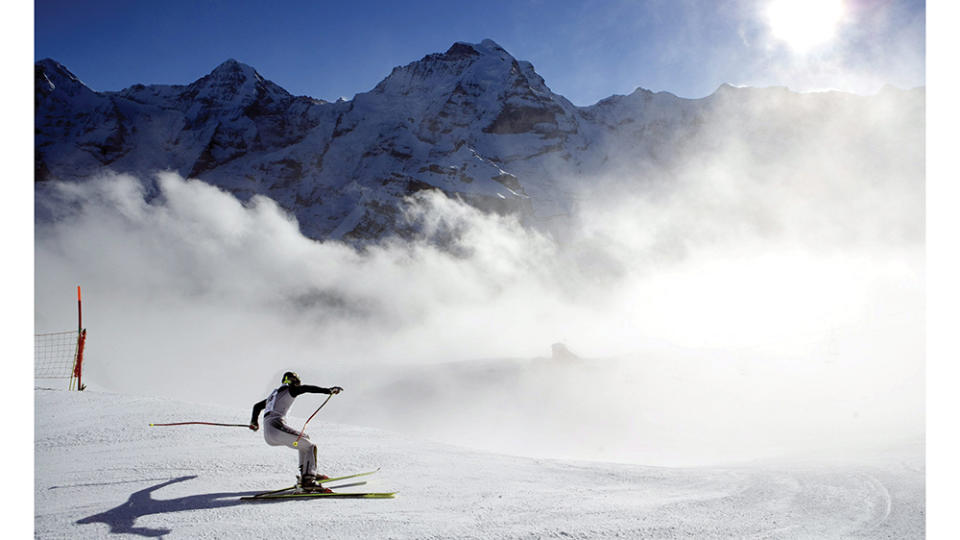
It’s justified to question what, precisely, is the draw? Above all, the Inferno is a race of superlatives: It’s the world’s oldest, longest, largest and probably toughest downhill ski event. Organizers trace its origins to January 29, 1928, when Sir Arnold Lunn, the granddaddy of competitive downhill skiing, joined 16 other British skiers, including four women, in the very first Inferno Cup. Donning their tweeds, the intrepid crew strapped skins onto the undersides of their enormous hickory-wood skis, enabling them to slide forward on snow but not backward, then labored over 4,000 vertical feet from the picturesque village of Mürren to the peak of the Schilthorn before setting off in unison to hurtle 8.5 miles back down the mountain through thick, untracked snow, trees and shrubs. (In that era, the pristinely manicured runs to which modern-day recreational skiers have grown accustomed were virtually nonexistent; all skiing was on natural terrain.) The race’s winner made it to the bottom in one hour and 12 minutes.
The writer and cartoonist Alan d’Egville painted a vivid picture of that inaugural race for the Ski Club of Great Britain’s 1928 British Ski Year Book: “The name Inferno comes from the torments endured by competitors on the most grueling course ever set for a downhill race.”
The Inferno Cup was organized by (and mostly for) members of Britain’s Kandahar Ski Club—also founded by Lunn—until 1936, when the Mürren Ski School and Tourist Office took on the mantle. Run ever since with less British gung ho–ism and more Swiss organization, the Inferno has been held in the resort most winters since its inception, with the odd cancellation due to events such as World War II, when competitors were busy fighting each other on the battlefields rather than on the pistes.
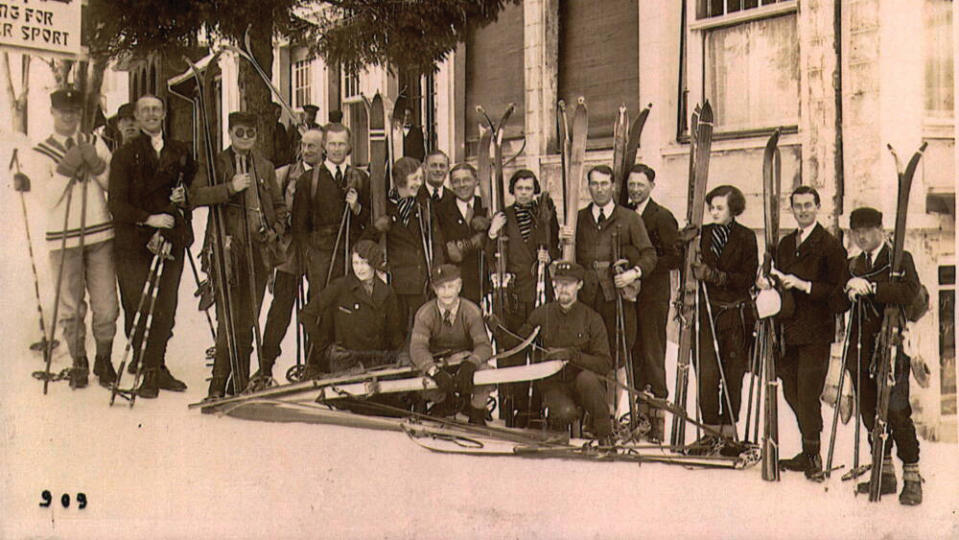
While today’s contestants race in catsuits instead of baggy plus fours and have the luxury of reaching the start line by way of cable car, the torments they face remain challenging in the extreme. Snow cover permitting, the race starts from just below the 9,744-foot Schilthorn summit and finishes in the valley in Lauterbrunnen, at 2,625 feet, a vertical drop—“vert,” in ski parlance—of over 6,500 feet that covers more than nine miles of piste. For comparison, that’s the same length as the longest ski trail in North America, the Last Spike at Revelstoke Mountain Resort, in British Columbia, which also delivers the continent’s most vert: a relatively paltry 5,620 feet.
Competitors are seeded by previous race times and released at 12-second intervals. The rookies typically trail at the back of the pack, left to enjoy a maiden outing on what is by then a harrowingly rutted and chopped-up course. Whereas the top skiers finish in just over 13 minutes, reaching speeds of up to 80 miles per hour, mere mortals require somewhere in the 16-minute range.
They are thigh-busting, lung-burning minutes. A short, sharp start from the Schilthorn leads into a long tuck; then a drawn-out S curve is followed by the hair-raisingly steep and icy Kanonenrohr (“gun barrel”); a series of hairpins fly straight into a sharp right curve; and a steep climb through woodland precedes a bumpy, twisting forest trail to the finish line.
My inaugural Inferno race day dawned bright and crisp—perfect conditions—and, as a journalist, I was fortunate enough to have bagged an early starting bib. Other than losing my goggles on the cable-car ride up to the start line, I had zero excuses for racing poorly—particularly after a charming Swiss chap loaned me his goggles for the race.
As I shivered in the freezing-morning cold, surrounded by powerful Germanic types encased in Lycra and lunging aggressively at the snow, I listened to the conflicting advice of Inferno veterans. “You have to take chances to finish well!” “Go fast or go home!” “Reach the first path without falling over.” When I spotted the bottle of schnapps being proffered to racers as they stepped into the starting tent, that last tip, bestowed upon a friend of mine by Mürren local and four-time Inferno winner Kurt Huggler, won out. (It’s always important to consider the source: In addition to being a onetime World Cup skier, Huggler is largely responsible for building the Inferno’s following from a few dozen intrepid annual entrants to more than a thousand in the 1970s. He’s also credited with hatching the idea to torch that effigy of Satan.) Thanks to Huggler (and the schnapps?), I completed my Inferno without crashing—and without going terribly fast.
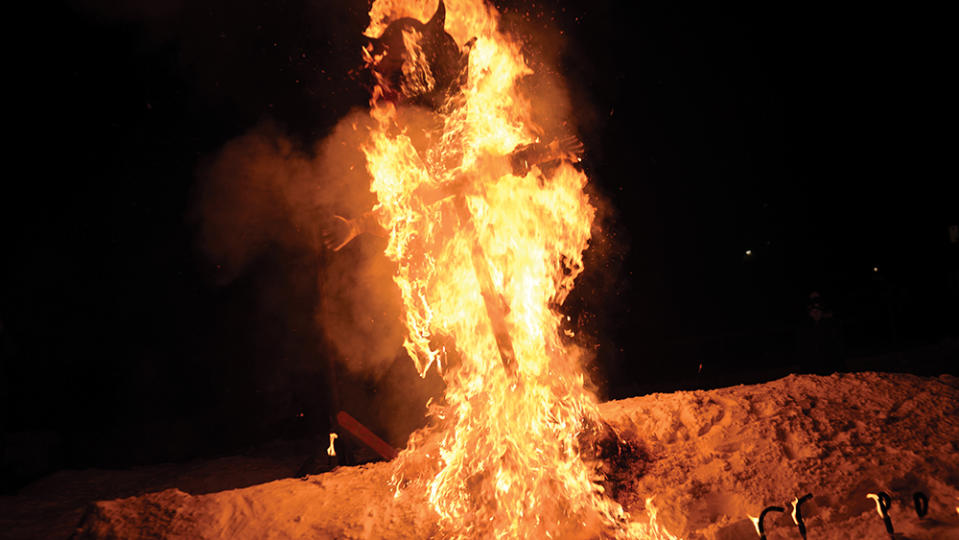
That might be the universal truth of the Inferno: Your sole regret is not pushing yourself harder, and you compulsively relive each moment when you could have—should have—gone faster. It becomes an itch that can’t be scratched… except by competing in another Inferno. Take Franz Sonderegger, a Mürren man in his 80s who is said to have skied the annual race 54 times. When he entered his first Inferno in 1956, there still wasn’t a cable car to the Schilthorn—like those early Inferno pioneers, he had to strap skins onto his skis and trek up the mountain. He credits piste-side spectators, on hand to administer a bracing schnapps, with helping him scrape through his more spectacular falls. Or consider the countless skiers who boast Diamond Devils, coveted badges depicting the fallen angel with real diamonds for eyes, awarded in recognition of having completed 12 Infernos. Or Peter Lunn, Sir Arnold’s son, who led the British ski team in the 1936 Winter Olympics before becoming an important spy- master during the Cold War—he raced his last Inferno at the age of 90 and apparently believed that remaining upright on the slopes on any given day meant he hadn’t tried hard enough.
Despite—or, more likely, because of—the Inferno’s risks, perhaps the only thing harder than the race may be gaining access to it. Entrance is available via public ballot to “strong skiers” over 18 years of age, but race bibs are capped at 1,850, with applications most years exceeding 2,000. Priority goes to those who have raced before, making it particularly tricky for rookies to break in.
Which brings us back to the Kandahar Ski Club, founded by Sir Arnold in Mürren in 1924 to bolster the new sport of Alpine skiing. Given its history with the Inferno, the club snags around 200 bibs each year, making membership a solid bet for reaching the start line. But becoming a member (a “K,” to those in the know, of which there are currently around 1,400) means being thick as thieves with at least two existing Ks: one to propose your name and another to second your nomination.
Those who succeed in being welcomed into its tweedy embrace find themselves swept up by the other members’ infectious love of skiing, mountains and fun. Receiving the nod was how I gained entry to the Mürren event, and I learned that for members, the Inferno is more than a quarter-hour race: I joined many in decamping to the village’s cozy Hotel Eiger for a full week of Inferno shenanigans. We warmed up for the big event with informal ski-race training and sled races, as well as boozy lunches at the Suppenalp mountain hut and Jägerbomb-infused evenings in the hotel’s wood-paneled Tächi Bar.
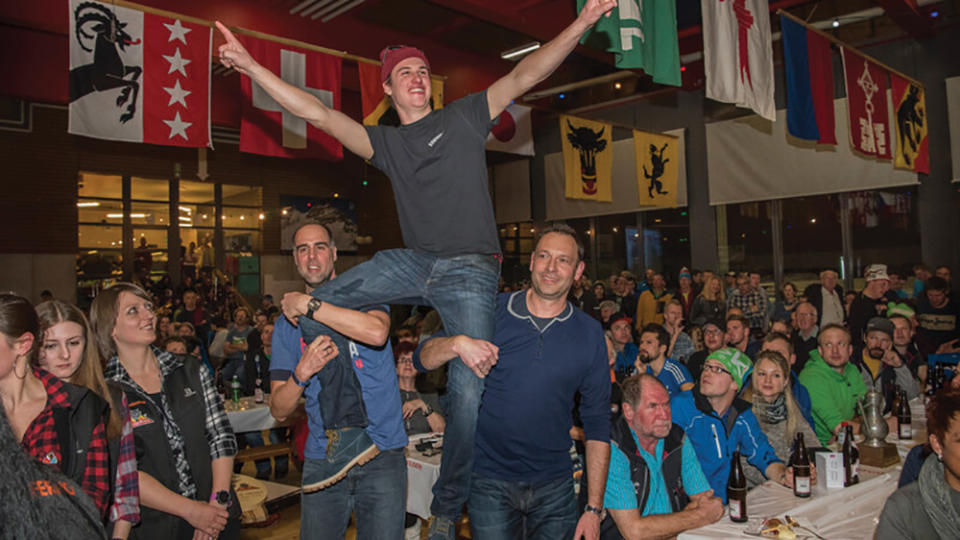
Spurred on by my fellow members’ enthusiasm, I had joined the 500 skiers permitted to tackle the Inferno Super-Combination—a triple whammy that adds a nighttime cross-country contest around the village and a giant-slalom race on top of the Inferno. While I can’t recommend making your cross-country debut a highly competitive, technically challenging course that cinches around gingerbread-cute chalets in the pitch dark and subzero temperatures—and I still wince remembering my gawky attempts to tame those impossibly long and skinny skis—there’s a certain camaraderie that emerges from the mutual ordeal. It’s this solidarity, combined with the visceral excitement of taking part in an extraordinary and historic race, that makes the Inferno so special.
“I love the race, as it is about the only chance to have a really fast ski down a fantastic piste with no one in front, meaning I can go as fast as I like,” says James Palmer-Tomkinson, a self-described relative newcomer to the Kandahar Ski Club (he joined in 2009) but a member of British skiing aristocracy, with four ski champions in his family: his grandfather, father and two uncles. “The camaraderie with the other Ks is very special also.”
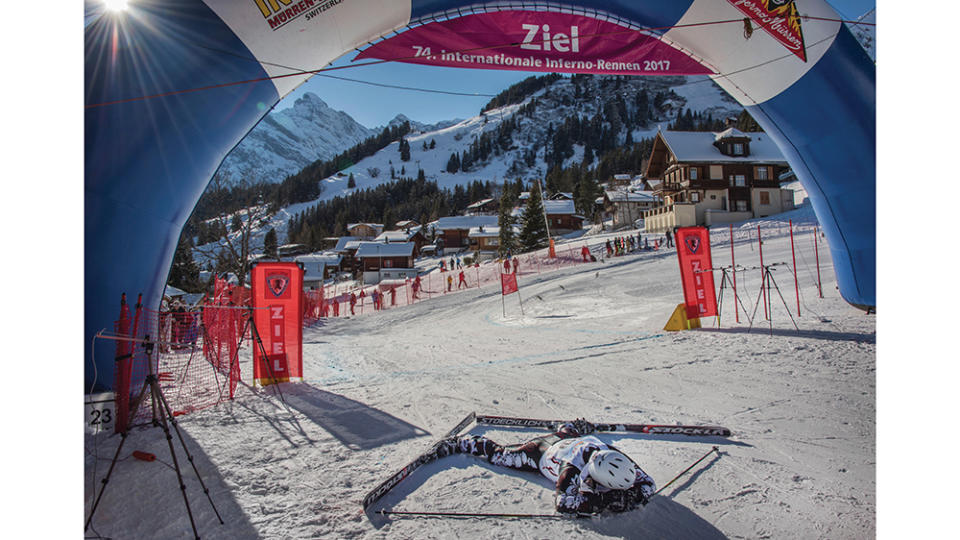
There’s no denying that everybody in Mürren takes the Inferno extremely seriously, but there’s more to it than winning or achieving a new personal best. The shared thrill, a connection that transcends languages and cultures, has brought skiers together here for nearly a century. The 78th Inferno, held on January 22, 2022, proved to be particularly celebratory for members of the Kandahar Club. On that same date, one century and a day after Sir Arnold Lunn spearheaded the world’s first slalom race, member Dave Ryding slalomed his way to World Cup victory in Kitzbühel, Austria, becoming the first Briton ever to take gold in an Alpine ski event.
The only celebration likely to beat that particular Inferno after-party will take place in Mürren in January 2024, when the 80th Inferno will coincide with the centenary of the Kandahar Club, setting the scene for a serious shindig. I have little doubt that the Ks will do Sir Arnold proud in his spiritual Alpine home.
The World’s Craziest Ski Races
If the Inferno has inspired you to put your carving, schussing and slaloming to the test, here are some of the wildest amateur events out there.
Der Weisse Ring
January 21 | Lech Zürs, Austria
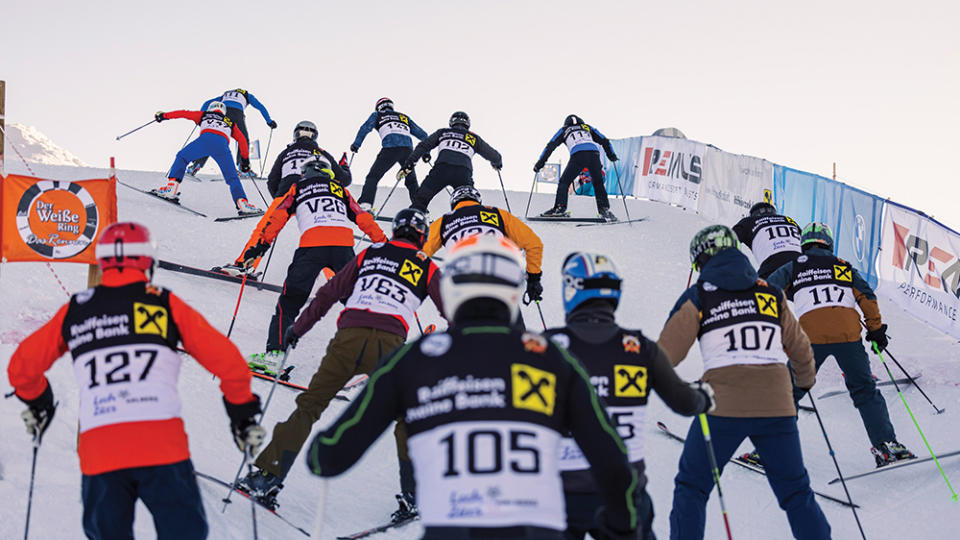
Der Weisse Ring (the White Ring), aka Das Speed Race, is a 13.6-mile-long circuit around the resorts of Lech and Zürs in Austria’s Arlberg ski area. Open to 1,000 mostly amateur racers, the route covers some 18,000 feet of vertical descent, with five lifts, a short, sharp ascent and five downhill sections, including the ungroomed Madloch itinerary. It takes competitors anywhere between 44 minutes and two hours to complete the course, with clutches of 20 skiers released at the starting line every 100 seconds to achieve a degree of race decorum—although brace yourself for seriously competitive chairlift queuing.
Der Weisses Rausch
April 22 | St. Anton am Arlberg, Austria
St. Anton’s Weisses Rausch (White Thrill) opens to 555 hardcore competitors each April. Wearing an array of catsuits and “fancy dress” (as the British call flamboyantly festive attire) from ’80s retro get-ups to ballgowns, participants line up on the precipitous ridge of the off-piste Valluga route at 5 pm. Inspired by a scene in the seminal 1930s ski film Der Weisse Rausch, in which two people are chased down a mountain by a huge crowd of skiers, the race typically transforms the Valluga into a tangled mess of skiers, snowboarders, monoskiers and telemarkers. If you survive Valluga, you’re rewarded with a hike up “Pain Mountain,” followed by a crazed descent into St. Anton. Covering 5.6 miles of mostly ungroomed trails and a total of 4,430 vertical feet of descent, the event typically takes contestants around 15 minutes to complete—if they complete it at all.
Le Derby de la Meije
March 31 | La Grave, France
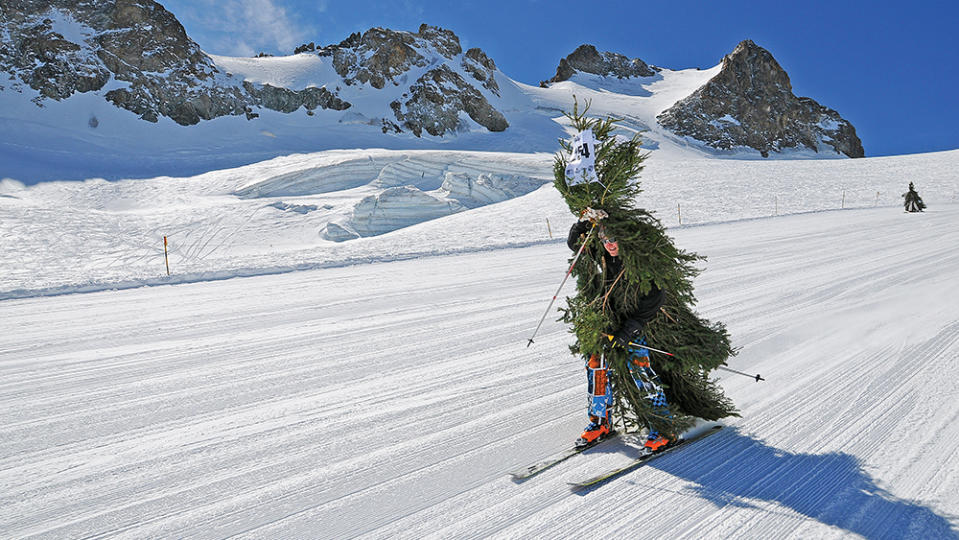
The rugged French town of La Grave is the stuff of freeriding legend: a unique resort that boasts just one gondola and one groomed slope—and some of the most notorious off-piste skiing in the Alps. True to the area’s reputation, a top-to-bottom race on La Meije, the imposing glacial peak that looms above La Grave, is for neither the novice nor the faint-hearted. Celebrating its 33rd birthday this year, Le Derby de la Meije has developed into a three-day celebration of freeriding and music, where “fancy dress” on the slopes is optional but popular. The race itself is open to 800 competitors, who can compete as individuals or as part of three-person teams, riding on skis (Alpine, telemark, snowblades or monoski), snowboards or “all other types of sliding device.” Every team must include at least one female, with each member riding a different mode of snow transport.
The Power of Four Ski-Mountaineering Challenge
Aspen, Colo. | February 25
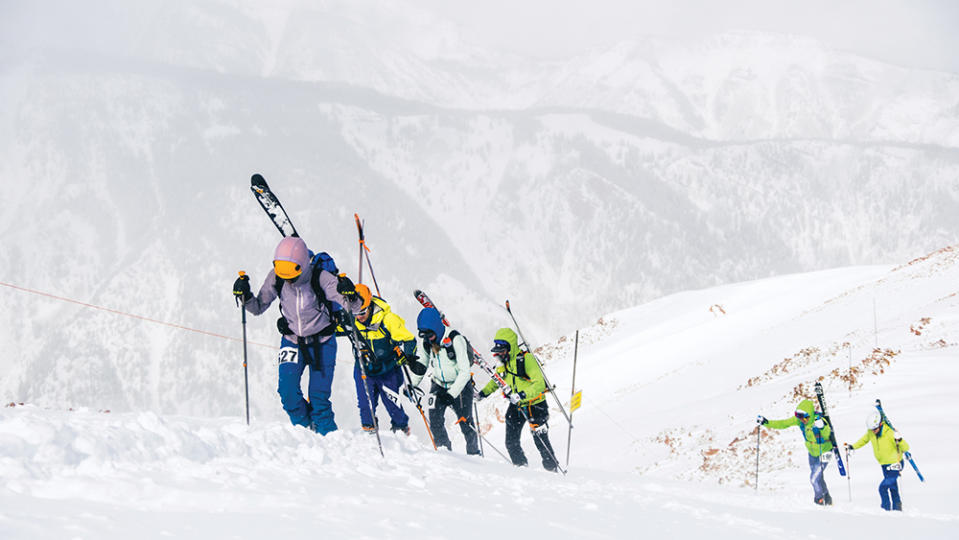
Prefer going uphill to down? Here’s an opportunity to spend over 10 hours climbing more than 10,000 vertical feet as fast as you can—on skis. The arduous event attracts some 200 lunatics, sorry, competitors each year to Aspen’s Rocky Mountains, thanks to the growing popularity of ski mountaineering—aka skimo—in which participants attach synthetic climbing skins to their skis to negotiate the ascent. Starting at dawn at the base of Snowmass Mountain, racers shimmy up and down Buttermilk Mountain before tackling the nearly 4,000-foot climb to summit the Highland Bowl. Competitors next set their sights on the peak of Aspen Mountain, eventually descending into Aspen to a rapturous welcome.
Sign up for Robb Report's Newsletter. For the latest news, follow us on Facebook, Twitter, and Instagram.

